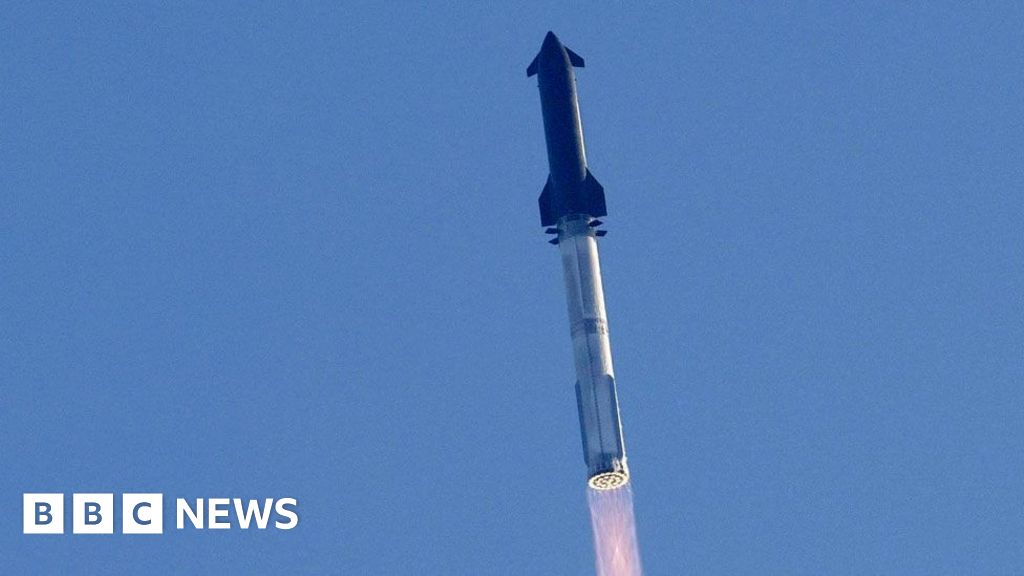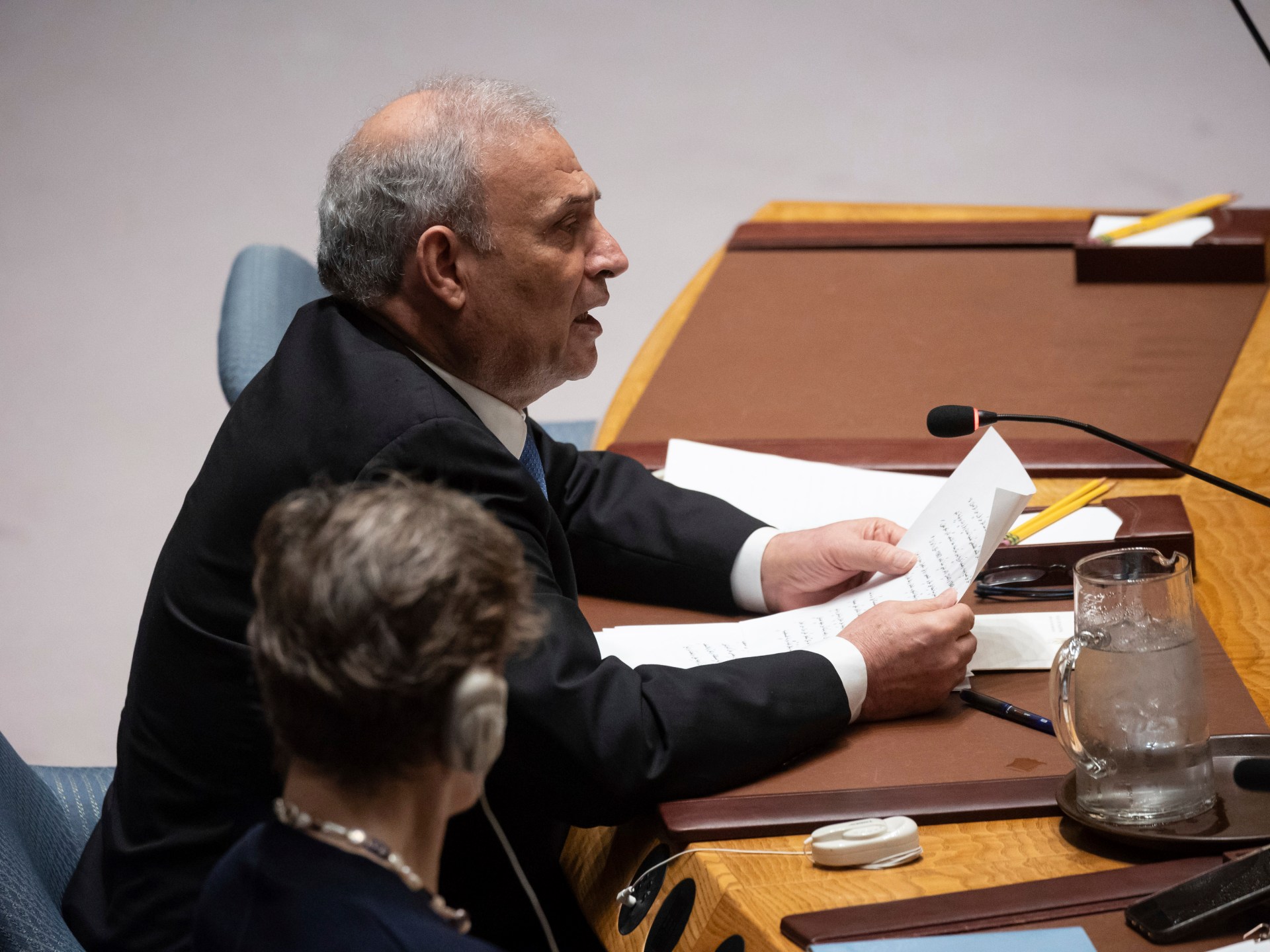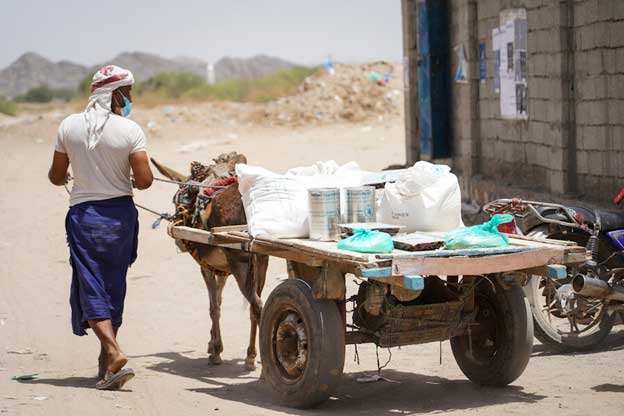‘I have lost everything’: Bangladesh floods strand 1.24 million families | Climate Crisis
Dhaka, Bangladesh – Ekramul Haque was stunned when his uncle called him late in the afternoon of August 21 to inform him that floodwaters had inundated their ancestral home in southeastern Bangladesh’s Feni district, close to the Indian border.
At the time, Haque was about 10km (6 miles) away in the town of Mirsarai in the Chattogram district, where he lives with his wife and children.
The next day, it took 40 minutes travelling by minibus in the downpour to reach his village.
“I rushed back to my home the next morning amidst torrential rain. By the time I arrived, knee-deep water had already entered and soaked everything,” the 29-year-old recounted. “I urged my extended family to come with me to Mirsarai.”
His parents and one uncle returned to Mirsarai with him.
But as the heavy rain continued and reports emerged of floodwaters submerging single-storey homes in his village in Chhagalnaiya Upazila (an upazila is a district subunit), Haque decided to undertake rescue missions starting on Friday morning to help other family members and residents of the village who were stranded.
“I contacted a few friends from university and formed a team to help. However, I was shocked to discover that the road from Mirsarai to Chagalnaiya was entirely submerged under chest-high water, making it completely impassable on Friday,” he said.
Delivering relief supplies
Haque and his friends initially tried to construct a makeshift raft from felled banana trees, but it failed to float due to the currents.
They eventually managed to hire a small boat at three times the usual cost. “The current was very strong, and it took the boatman three hours to navigate us through. When we arrived, nearly all the houses were completely underwater,” Haque told Al Jazeera.
The region where Haque grew up doesn’t always experience annual monsoon floods, unlike lower lying parts of the country.
“I don’t recall ever seeing floodwaters rise beyond ankle-deep in my area before in monsoon. My parents mentioned that during the major flood of 1988, the water reached knee-deep. This situation was beyond anything I’ve ever experienced,” he added, speaking by phone while dropping off aid in Chhagalnaiya.
Floods in central, eastern and southeastern Bangladesh have killed 23 people and affected more than 5.7 million. About 1.24 million families across 11 districts in the country of 180 million people are stranded, cut off from the rest of the country by floodwaters due to relentless monsoon rains and overflowing rivers.
As the floodwaters gradually recede, those affected are urgently in need of food, clean water, medicines and dry clothing. The situation is especially critical in remote areas like Haque’s village, which is not close to the district town and where blocked roads have severely impeded rescue and relief efforts.
“We have been working tirelessly to deliver urgent relief to those stranded for the past few days,” Haque said on Tuesday. “Yesterday, we reached a village where people had been without food for 72 hours. Many were severely ill with diarrhoea and lacked clean drinking water. It was an unprecedented crisis.”

Anti-Indian sentiment
Bangladesh, located on the Ganges-Brahmaputra Delta, which is the world’s largest, has a deep connection with water. Its landscape, characterised by rivers and floodplains, is accustomed to annual monsoon floods, particularly in the low-lying northeastern districts. Residents in these areas are familiar with this cycle and prepare by taking their valuables to relatives in areas that are not flood-prone and stocking up on food and water before the heavy rains and flooding that occur each monsoon season.
Bangladesh is one of the world’s most climate-vulnerable countries, and about 3.5 million people are at risk of annual river flooding, according to a 2015 World Bank Institute analysis.
But this year’s floods caught many in the southeast off guard.
In flood-affected districts such as Feni, Cumilla and Lakshmipur – regions close to the Indian border – many are blaming India, which they said released water from the Dumbur Dam in the state of Tripura in the middle of last week. India has denied opening the sluice gates.
The dam, a low structure about 30 metres (100ft) high, is more than 120km (75 miles) from the Bangladeshi border. It produces electricity that contributes to the grid used by Bangladesh and is built on the Gumti River, which merges with the Meghna in Bangladesh.
Tripura is also facing severe flooding with 31 people reported dead and more than 100,000 residents displaced into relief camps. Floods and landslides have affected nearly 1.7 million people in India.
Kamrul Hasan Nomani, 41, a resident of Lakshmipur, told Al Jazeera that the floodwater is knee-deep in his home and has damaged a large part of it.
He believes that no amount of rain could have caused chest-deep water in his village without the dam opening.
For Nomani, like many affected by the flooding, the crisis has generated anti-Indian sentiment with many believing that India purposefully opened the dam without warning. “They did it intentionally because their preferred government, led by [former Prime Minister Sheikh] Hasina, has fallen in Bangladesh,” Nomani alleged.
On August 5 after massive student-led protests, Hasina’s 15-year rule came to an abrupt end. Hasina, who was widely seen as New Delhi’s favoured leader in Bangladesh, sought refuge in India. Anti-India sentiment that existed while Hasina was prime minister, fuelled by allegations of Indian interference to keep her in power, has escalated since she fled to India.
India cited excessive rainfall as the cause of the flooding while acknowledging that on August 21, a flood-related power outage and communications failure prevented sending the usual river updates to their neighbours downstream in Bangladesh.
Shafiqul Alam, press secretary for Muhammad Yunus, the Nobel Peace Prize laureate leading Bangladesh’s new interim government, told reporters in Dhaka that Pranay Verma, India’s high commissioner to Bangladesh, informed the interim government that the water from the dam was “released automatically” due to elevated levels.
Sarder Uday Raihan, an executive engineer at the Flood Forecasting and Warning Centre in Bangladesh, told Al Jazeera that the agency usually gets information about rising water levels in rivers in India twice a day.
“However, this time, India did not share any updates. Without accurate information, it’s hard to give an accurate flood forecast,” he said, adding that timely warnings could have helped prevent deaths and damage.

Destroyed homes and crops
Mohamad Khalequzzaman, a professor of geology at Lock Haven University in the United States, told Al Jazeera that the last flood that inundated districts like Feni, Cumilla or Lakshmipur was in 1988.
“The primary cause of this year’s flooding appears to be unusual rainfall in the region, but several other factors have exacerbated the situation,” he explained.
He noted that rainfall from August 20 to Friday ranged from 200 to 493mm (8 to 19.4 inches), compared with the usual 120 to 360mm (4.7 to 14.2 inches) in various locations in Tripura and eastern Bangladesh, which he described as unusually “heavy” for that region during the monsoon.
Khalequzzaman added that while the sudden release of dam water during an already severe flood period may have contributed to flooding in the Gomati River watershed, it is unlikely to have contributed significantly to flooding in Feni town, Sonagazi and Chhagalnaiya Upazilas because they do not lie in the river catchment area.
He further explained that with the soil of the watershed area already saturated, most of the rainwater turns into surface run-off, leading to flooding of nearby rivers in the affected districts.
He also pointed out that unplanned urbanisation over the years has led to a build-up of silt, which, along with roads, buildings and embankments, particularly along the Gomati and Muhuri rivers, prevent floodwaters from receding.
Additionally, he said, land encroachment by illegal businesses using the Gomati and Feni rivers for transportation, for example, has destroyed much of the natural drainage system in these areas.
“The combination of torrential rain, disruptions in river flow both in India and Bangladesh, loss of natural drainage, riverbed siltation and impediments to surface flow have all contributed to the severe flooding,” he said.
In a still-flooded village in Cumilla, the home of Abdul Matin, a teacher, has been destroyed.
“I have lost everything. My corrugated tin house has been washed away. I’m unsure how I’ll cope with the financial devastation caused by the flood,” Matin said.
He does not believe the flooding was solely caused by heavy rainfall and damage to the natural drainage system. “I hold India responsible for this,” he said. “This was India’s water.”
Ismail Mridha, a 46-year-old farmer from Sonagazi Upazila in Feni, told Al Jazeera that the flood devastated both his home and farmland. “My house, made of mud and corrugated tin, has been completely destroyed, and the farmland where I grew eggplant and bottle gourd has been washed away,” he said.
“I survived the flood, but I am uncertain how I will manage to recover from the financial devastation.”
Check out our Latest News and Follow us at Facebook
Original Source







